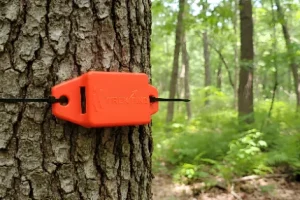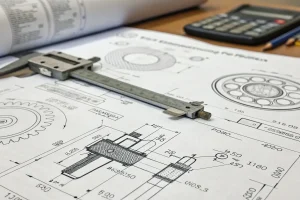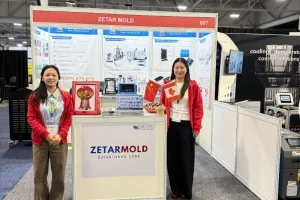Introduction: 3D printing is great and all, but it’s not going to replace conventional injection moulding anytime soon. Both have their pros and cons and can outperform each other in different areas.

3D printing is good for small runs and prototyping, but injection molding process is still the high volume production way to make a lot of parts.This article is about why 3D printing won’t replace injection molding.
What is 3D Printing?
3D printing is additive manufacturing, which means that the initial material is built up layer by layer. 3D printing creates three-dimensional objects from reading a virtual computer design and reproducing the molding by using materials, filaments, or powders.

What is Injection Molding?
Injection molding is a way to make stuff out of plastic. It’s a process where a plastic material is heated until it melts. The melted plastic is then forced into a mold under high pressure. After the plastic cools, the mold is opened and the part is taken out.

It’s a fast process and is used to make large numbers of identical items from high precision engineering components to disposable consumer goods.In the injection molding process, choosing the right mold materials is crucial to the durability and production efficiency of the steel molds.
What are the Cost Comparisons of Injection Molding vs. 3D Printing?
The total cost of any manufacturing project is a big deal because it determines whether or not your product is going to be successful. The total cost is going to vary depending on a few different things like setup costs, tooling costs, and labor costs.

Here are the differences between injection molding and 3D printing costs and a breakdown of each.
Initial Setup Costs
The upfront cost of injection molding is higher because of the higher equipment and mold design and production. For example, even a small size (10 x 10 cm) mold may cost $5000 to $10,000. However, the mold can be used for a long time.

But 3D printing only requires the cost of the printer and the materials needed to start the project. It’s also flexible in terms of space, with printers coming in all sizes, from small desktop 3D printers to large industrial ones.
Processing Costs
As I mentioned earlier, the cost of injection molds initially adds a lot to the overall cost of the mold, but as you make more parts, the cost goes down. With 3D printing, you have lower mold costs up front, too.

Also, the cost of injection molding includes things like control units, part removal systems, and other little things that add to the cost of the mold.
Material Costs
First, manufacturers often buy materials in bulk for injection molding projects because it’s generally good for large quantities. So, it saves money. Also, molding can handle relatively low-grade materials without hurting product performance.

But with SLS, you fill the build chamber with powder. You can reuse the powder, but it’s not as efficient and it’s more expensive. Plus, some applications need materials with special properties (like high strength, flexibility, or thermal stability) to get the performance they want. Those materials cost more than the standard plastics used in injection molding.
Labor Costs
Lastly, labor costs are different between 3D printing and injection molding because it affects overall cost efficiency. The high degree of automation in 3D printing reduces labor costs for small batches, complex or customized parts. Human intervention is only required for setup, monitoring, and post-processing.

Injection molding is also an automated, advanced manufacturing process, but the complexity of mold design and maintenance leads to higher labor costs than 3D printing.
What are the Main Differences Between Injection Molding And 3D Printing?
Volume
Molds are a big deal in injection molding. You have to design and make molds. That makes injection molding not so good for prototyping and small batch production. On the other hand, there’s no such tooling hassle in 3D printing. Once you have your 3D printable design and filament, the machine can make your design real without any fuss.

So, 3D printing is great for prototyping with thousands of runs, unless other technologies can’t do the complexity you need. Another cool thing is that 3D printed injection molds are popular for plastic molding. But, injection molding is super cheap for medium to large runs. Once you make the mold, you can run millions of cycles.
Design Complexity and Customization
3D printing is king when it comes to complexity, especially when you compare injection molding vs. 3D printing. It can do sharp corners, undercuts, and other complex features. Injection molding, on the other hand, has some limitations for complex geometries, like straight draft angles, material flow at sharp corners, etc.

Also, if you are making up to thousands of parts, these same reasons make 3D printing better for custom parts and products.
Part Size
First, injection molding is flexible for a wide range of sizes, from small electronic housings to large car bumpers. But you have to use the corresponding injection molding equipment and tooling (molds). For example, large injection molding machines can mold parts up to 1.5 meters in length or more.

Typically, 3D printers are better suited for small components and products. However, recent innovations have expanded the size capabilities of 3D printed products and parts (300mm x 300mm x 400mm or larger).
Part Tolerances
3D printing has tighter tolerances than injection molding. For injection molded plastic parts, it falls between ±0.05mm and ±0.50mm. On the other hand, tolerances for 0.127D printed components can be as tight as ±3mm.

Also, tolerances depend on the material type, technology, tooling, equipment, and manufacturing experience.
Turnaround Time
Making an injection mold is a precise and time-consuming process that can take anywhere from a few weeks to a few months. You can use 3D printing and other types of injection molds to make it less time-consuming. Once the mold is ready, injection molding becomes very efficient and reduces long turnaround times.

On the other hand, 3D printing allows for a fast turnaround on initial production. This is because you don’t need tooling like molds and the initial setup time is much shorter.
Strength
The difference in strength between 3D printed and injection molded parts comes down to how they’re made. First, how strong are 3D printed parts? 3D printed parts are made by building up layers, which makes them weaker and less stiff in the sideways direction of the force.

On the flip side, molded parts are made with a single pour. This makes them stronger. The heat and pressure of the plastic molding process get rid of any air bubbles and make sure the material is all melted together.
So, injection molding gives you a stronger, stiffer part than 3D printing. The only thing you have to think about is the material, because the final strength also depends on what kind of raw material you’re using.
Surface Finish
Now, let’s compare how the parts look. When the molten material is forced into the shape of the mold by pressure and heat, the surface becomes smooth when it cools and hardens. But it also depends on how smooth the walls of the mold are.

On the other hand, 3D printed objects might have some visible material layer lines. The roughness (Ra) of 3D printed plastic products usually ranges from 1.6 to 25 µm. On the other hand, for molded parts, it is 0.1 to 0.2 microns.
Material Waste
Material waste happens when you do injection molding. It happens at gates and runners, sprues, and flash. But you can get it back in the next cycle.

On the other hand, 3D printing is super material efficient. It doesn’t waste any material (except sometimes on structural supports).
What are the Advantages and Disadvantages of Injection Molding?
What are the Advantages of Injection Molding?
It’s got great productivity and low unit costs, especially in mass production. Injection molding keeps the parts it makes precise from batch to batch. You can make molds that handle complex features and undercuts. You can use it for all kinds of things, from car door handles to medical syringes.

It keeps the original mechanical properties of the material or makes them better. The parts that come out of the mold look great, so you don’t have to do much to them after.
What are the Disadvantages of Injection Molding?
The first disadvantage is the big upfront investment in molding equipment and injection molds. Complex part geometries are limited due to design restrictions like draft angles and material flow. Unit costs are too high for small batches. Plastic waste raises sustainability issues and environmental concerns.

What are the Pros and Cons of 3D Printing?
What are the Advantages of 3D Printing?
The initial investment in setup and tooling is low, making it cost-effective for low-volume production. It can create more complex shapes than injection molding, and design changes can be adjusted quickly.

3D printers can quickly produce prototypes for design iteration and product development. Highly customized parts can be achieved through 3D printing. As an additive process, it produces less waste than subtractive technologies.
What are the Disadvantages of 3D Printing?
3D printing for mass production is generally slower than injection molding. However, it can be effective if the design complexity is not compatible with molding. Part size is limited by bed size and printer capabilities. Printed surfaces often exhibit layer lines. Therefore, additional finishing processes may be required to achieve a smooth surface.

How to Choose: Injection Molding Or 3D Printing?
When it comes to choosing between injection molding and 3D printing for production, there are a few key factors to consider.
Part Batch
The number of parts you need is a big factor in deciding which process to use. Injection molding is great for making a lot of parts (1000+ parts per run). If you only need a few parts (less than 10), 3D printing is cheaper and easier.

If you’re using simple 3D printing processes like FDM or SLS, with cheap plastics like ABS, PC, Nylon, and you’re making one part or a few parts (same and non-same), 3D printing is definitely the way to go. MJF is also a good option for making medium quantities (10-1000) and is very common.
In conclusion, if you’re making a lot of parts, injection molding is the way to go. If you’re making a few parts, 3D printing is the way to go.
Design Complexity
To make a part with injection molding, you have to make a mold first. You don’t make a mold of the part, you make a mold of the part design. Designing a CAD model for injection molding is not easy because there are many things to think about.

For example, if you have right angles in your part design, it’s hard to get the part out of the mold. If you have delicate areas, you have to be very careful with them. But if you want to make something complex, 3D printing is the way to go. No matter how complex the design is, 3D printing can do it with very little effort.
In conclusion, make sure your design can be injection molded. If it can’t, change it. If it can, think about 3D printing.
Iteration Time
Injection molding takes a long time because you have to analyze the design and build a perfect mold for it (10-20 days). 3D printing has a much shorter lead time than injection molding. You can get 3D printed parts in as fast as 3 days at Xometry.

In conclusion, If you need the part right away, use 3D printing.
Customization
Once you build the mold for injection molding, it’s expensive and time-consuming to change it. Injection molding is not good for customizing parts or making changes to an existing design. What you get out of the mold is the final part, and changing it is very difficult.

On the other hand, 3D printing is great for customizing parts. All you need is a modified or customized CAD file. So it’s great for prototyping, testing parts.
In conclusion, if you want to make a prototype or customize something, you should use 3D printing.
Material Strength
Injection molded parts are made in one solid piece, which makes them stronger because there are no seams or weak points. 3D printed parts are made layer by layer, which makes them weaker. 3D printed parts have visible lines and structural defects that are not usually seen in injection molded parts.

In conclusion,If you need something strong, go with plastic injection molding .
Surface Finish
Even though 3D printed layers are small and close together, you can still see them. This means that the surface of the finished object is bumpy, no matter how detailed the layers are. This is a problem if you want to make things that rub against other things, like machine parts that touch and move. You have to smooth the surface after you print it, which is extra work.

In contrast, when you inject plastic into a mold, the plastic goes in as a single layer with a smooth surface. You don’t have to worry about mold lines and layers. Plus, you can smooth injection molded parts after you make them.
Conclusion: If you want a nice surface finish, go with injection molding.
Material Loss
Injection molding is efficient because it only uses the material needed for each design. This makes it a great way to mass-produce objects without worrying about waste. On the other hand, some 3D printing technologies lose material when building support structures, and even if the material powder can be reused, it can only be reused a few times before it doesn’t work as well.

Conclusion: 3D printing doesn’t produce much waste, like support structures that have to be removed for failed prints in post-production, but when it’s used to make one-offs or small batches, the waste isn’t that big of a deal, whereas for large batches, the waste is huge. So if you have a big custom batch, you might want to think about injection molding because you don’t have to worry about material waste.

Conclusion
Both processes are good at making plastic stuff, but they’re good at different things. Injection molding is good for making a lot of small to big complicated parts. 3D printing is good for making a few parts that are complicated. So, 3D printing is not going to replace traditional manufacturing injection molding .










